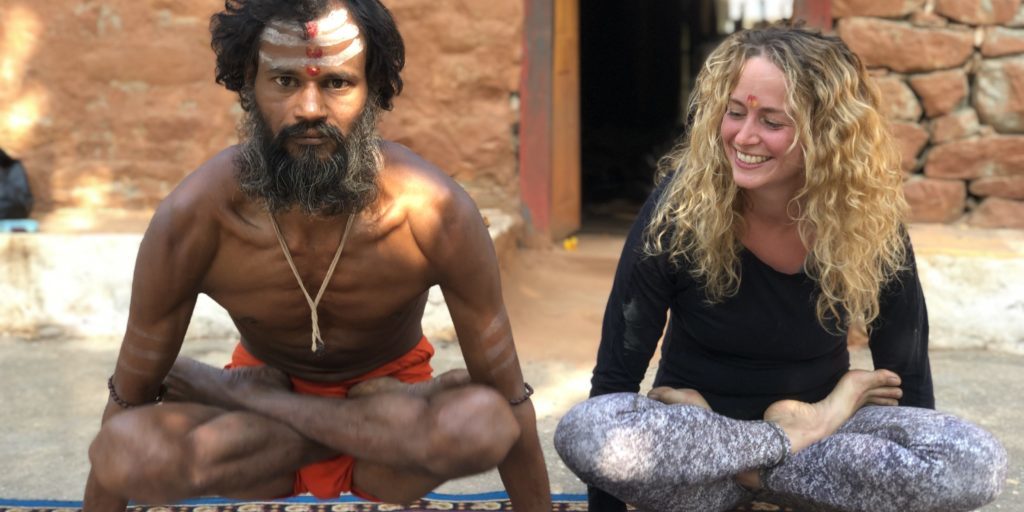Similarities between India and Mexico

Similarities between India and Mexico

SOCIAL ORDER
Central Mexico is well known for its enormous capacity to accommodate tens of millions of people. This leads Mexicans to think that they live in a highly active and busy city. That was what I thought until I got to India. The pace of life in India is extremely fast in any big city. Rishikesh, despite being home to the Rishis (men who keep the ancient knowledge of India), the shock that the city hits visitors is tremendous, especially for the amount of noise, aromas and eccentricities that one can see in every corner. As in any city, when approaching the limits that surround you one finds greater calm and serenity. In Mexico things are just a little less relaxed, but very different. In the country's capital, the stimuli are less chaotic, and it is easier to find prolonged moments of harmony in the squares, where music and colors sound to the rhythm of the hearts of the inhabitants.
In India things are very fast, and there is a fluid order that has no explanation in the eyes of Westerners. Regarding public transport, India is very similar to Mexico, always full of people, to such a degree that not even a pin fits in the cabins of buses and subways. Only in India this is taken to the extreme, since the number of people is greater and the spaces smaller; And yet, I could feel the rhythm even faster and smoother than anywhere in Mexico I've been. Animals that seem exotic to us, such as cows and primates, are also housed in the streets of India. The fact that these animals wander the streets and leave their waste anywhere can create an uncomfortable environment for any visitor. I had a hard time adapting, because while on the one hand I admired the fact that in India these animals were respected and allowed to live with humans, on the other hand I did not understand where tolerance arose for leaving animal waste to dispose of alone on the paved streets.
FOOD
Definitely both worlds have a unique and very varied gastronomic wealth. While in India, I rarely missed Mexican food. As in Mexico, the food is rich in spices (the majority strong) and the tropical fruits are of an exquisite flavor. But despite the fact that both countries evoke an exotic culinary experience (for the eyes of any other culture), I can say that both are very different in their main ingredients. Corn is definitely the strongest in America, and stands out in the dishes made with it, such as tacos, huaraches, atole, quesadillas, pozol, broth and more. In contrast, India stands out for its rice, nuts and spices used, such as curry and gee (from cow's milk butter). Of course, eating food from both cultures must be experienced in their respective nations. I had the opportunity to taste Mexican food in India, and I was disappointed to savor dishes under recipe, with ingredients that replace the original ones and with a completely different flavor.
MUSIC & ART
Definitely the music of India fascinated me. I was able to connect deeply with the sounds and songs that in crowds rise to the skies, the waters and the mountains. Music in Mexico has a much greater impact after European colonization, as genres such as mariachi, norteño or son jarocho have a direct influence on Spanish and even German music. This makes the experience in Mexico put us in an equally beautiful post-colonial context, because little is known about the music that the natives produced prior to the arrival of the Europeans. Instead, India holds melodies and harmonies that clearly resonate and inspire all cultures in the world, especially when they are spiritual songs.
PHYSICAL DISCIPLINES
Going into the field of physical exercises, India kept me with very high expectations regarding Yoga. And I was definitely surprised to see people, even elderly, experienced in the disciplines, with tremendous elasticity and wonderful concentration. The Yoga experience in India is very authentic, deep and well supported by a strict and structured method. Mexico has also adopted Yoga from India, especially in the Mexican Caribbean, where you can find Yoga studies that share the Hindu philosophy in a correct way. However, in Mexico there is pre-Hispanic dance, which offers power and energy in the form of marches wrapped in rituals that seek to rescue and preserve the pre-Hispanic essence and its authenticity. Of course, both practices are completely different, and they certainly give enormous cultural richness to both worlds. From my perspective, studying Yoga in India is more about getting involved in culture than the discipline itself, since the quality of Yoga that is taught in Mexico is very high. The difference is that practicing Yoga in the Himalayas offers a lot of context, so you can breathe the Rishi essence in its maximum splendor.
TRADITIONS
Both countries were colonized by European nations, which left very strong cultural wounds that to this day prevail. Things are so different that you can tell from the moment you enter a bathroom in India. Adapting is not easy, but without a doubt for the people of Mexico it can be an even fun experience, especially since it reminds us a lot of our own culture and its “follies” (said with a humorous sense). Both cultures are colorful, expressing their eccentric and precise past. The best thing about experiencing Hindu culture is that I was able to see how proud they are of their roots, very similar to what happens in Mexico. I believe in the personal that it is healthy to participate in the traditions of both cultures, without judgments or attachments, to obtain an overview and broad spectrum of how amazing human beings have been in their evolutionary growth and in their expression of it.
SPIRITUALITY
The fortune of having experienced the city of Rishikesh was that I was able to wrap myself in its traditions for more than 5 months in an Ashram, spiritual institutes where knowledge is shared and lived directly with people who maintain the tradition in a devout and clear way. intention to preserve it. There, I realized that both countries practice devotion to their gods without question. In both countries, regardless of whether you believe in Jesus, Jehovah, Brahma, or Quetzalcoatl, devotional practice arises from deep within the hearts of practitioners. It is evident that in India the practice of Yoga is linked to the spirit, rather than to the fitness type wellness that is sought in the western world. The songs are to the gods and everything in existence must have a meaning or purpose to fulfill harmonic laws that the Universe itself dictates. Mexico is not far behind, only that you have to get out of the city and enter the adventure in the states that offer more spiritual experiences of Native American origin, such as the temazcales and the cacao ceremonies. Mexico has more affinity for Mother Nature, and it takes root more in the earth than in the cosmic forces, or at least it is what can be experienced in the most active ceremonies. Of course I am not talking about two sides of a coin or two opposites; Both cultures attend to the forces of the Universe and the spirit of the planet on which we live, only, in my experience, one more than the other.

WHAT BOTH CULTURES NEED THE WORLD
After this trip I was able to recognize two main challenges that both cultures have during the 21st century. The first is that, after globalization over the past two centuries, the authenticity of both cultures is sustained by a tradition that easily bends before tourism. By this I mean that, in order to satisfy global tourism, cultural aspects of immense importance are at risk, giving authenticity to these worlds. I believe that India and Mexico should bet more on the cultural authenticity of their lands and invest less in adapting capitalist / consumerist models that devour the integrity of traditions. When a town in any part of the world begins to sell global brands to satisfy the needs of a tourist, it weakens the power of local production and the atmosphere that makes it unique. These brands are found mainly in the food industry (which is usually even food of very poor nutritional quality), fashion, accommodation and lodging. I invite the conscious tourist to invest in the authenticity of the site to visit and seek to live the experience that the place can offer without risking its cultural identity.
The second challenge is related to your commitment to the environment. I believe that these cultures can set an example to the world, through their ancestral philosophies, the correct way to treat the planet according to its greatest need in recent decades: reduce the CO2 footprint that each person emits. Mexico and India are countries that want to adopt economic and social systems similar to those of other countries, but they do not carry out conscious practices that favor the environment, as countries in the European Union already do. This could represent that both nations become world powers that are not evaluated by their economic systems, but by their contributions to the environment.
WHAT BOTH CULTURES BRING TO THE WORLD
Passion, joy, color, music and a lot of love. Both countries are warm, treating their visitors as true planetary companions. In both India and Mexico, visitors feel at home and find spaces to be themselves. It is wonderful that both cultures offer such a kind and loving treatment, as it is a way of spreading cooperative thinking to achieve purposes of peace and communion. Both countries can say a lot about the power that spirituality has to influence decisions of great importance that have to do with conflicts that affect the whole world. I believe that, from the intangible, they can inspire the rational world to reach new levels of collective progress.
After this experience, he created with 4 other colleagues, this project called Nahua Yoga, in which we seek to preserve and innovate the Toltec philosophy (originating in Pre-Hispanic America), twinning with the teachings and ancient wisdom of India. This project aims to share what both cultures have to offer through philosophical knowledge and conscious physical movement, offering a disciplinary style with a very peculiar identity. If you are interested in learning more about this project, follow us on our social networks and subscribe to learn more about our workshops, courses and retreats. From the heart I wish you a happy walk through the vast and inexhaustible existence.
Hunab is a Mexican artist, therapist, and designer focused on the healing arts. His work aims to deepen any practice for self-growth and transpersonal fulfillment.
The experiences he designs combine deep psychology tools with ancient multicultural knowledge, especially Toltec wisdom. He considers himself a holistic executive and creator of concepts.

